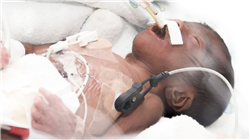University certificate
The world's largest faculty of medicine”
Description
Thanks to this 100% online Postgraduate diploma, you will cover from the fundamental principles of Pediatric Intensive Care to the advanced management of specific hemodynamic emergencies"

The care of Hemodynamic Emergencies in the Pediatric Intensive Care Unit (PICU) remains a crucial challenge in contemporary Pediatric Medicine. With the advancement of medical technology and a deeper understanding of the underlying pathophysiology, PICU teams are better equipped than ever to effectively diagnose and treat these emergencies.
This is how this Postgraduate diploma is born, in which the essential foundations of ethics, evidence-based decision making and meticulous initial assessment of the critically ill pediatric patient will be established. In addition, physicians will acquire advanced skills in hemodynamics to optimize cardiovascular support, as well as examine the ethical challenges inherent in the PICU, highlighting the importance of effective communication with families and interdisciplinary collaboration.
In addition, the agenda will focus on hemodynamic emergencies such as pediatric Shock and Heart Failure. The course will also focus on the interpretation of pediatric electrocardiograms, the management of Shock and the diagnosis of Heart Failure, providing comprehensive specialization in the pharmacological and surgical management of these conditions.
Finally, professionals will be instructed in advanced management strategies, such as specialized life support and specific therapeutic options for each condition. In this sense, graduates will be prepared to interpret Echocardiography studies and guide accurate clinical decisions in a Pediatric Intensive Care setting. Overall, this academic program will provide a solid foundation and specialized skills to effectively address Hemodynamic Emergencies in the PICU.
In this context, TECH has created a comprehensive online program, specifically designed to fit the individual needs of the student body, eliminating obstacles such as physical travel or the obligation to follow fixed schedules. In addition, it is based on the innovative Relearning methodology, which focuses on the repetition of key concepts to ensure an effective and sustained understanding of the contents.
You will acquire specialized knowledge in initial evaluation, pharmacological treatment, interpretation of imaging studies and ethical decision making in critical situations. What are you waiting for to enroll?"
This Postgraduate diploma in Hemodynamic Emergencies in the PICU contains the most complete and up-to-date scientific program on the market. The most important features include:
- The development of practical cases presented by experts in Emergency Hemodynamics in the PICU
- The graphic, schematic and eminently practical contents with which it is conceived gather scientific and practical information on those disciplines that are indispensable for professional practice
- Practical exercises where the self-assessment process can be carried out to improve learning
- Its special emphasis on innovative methodologies
- Theoretical lessons, questions to the expert, debate forums on controversial topics, and individual reflection assignments
- Content that is accessible from any fixed or portable device with an Internet connection
You will be specialized in the use of diagnostic tools, such as Echocardiography and Chest X-ray, through the best didactic materials on the market, at the educational and technological forefront"
The program’s teaching staff includes professionals from the sector who contribute their work experience to this specializing program, as well as renowned specialists from leading societies and prestigious universities.
The multimedia content, developed with the latest educational technology, will provide the professional with situated and contextual learning, i.e., a simulated environment that will provide immersive education programmed to learn in real situations.
This program is designed around Problem-Based Learning, whereby the professional must try to solve the different professional practice situations that arise during the course. For this purpose, students will be assisted by an innovative interactive video system created by renowned and experienced experts.
You will delve into specific cardiology emergencies, such as Congenital Heart Disease, Myocarditis and Cardiomyopathies, at the hands of the best digital university in the world, according to Forbes"

Bet on TECH! You will emphasize the application of advanced hemodynamic knowledge to optimize cardiovascular support, select and administer critical drugs, and address ethical challenges in the PICU"
Syllabus
From the fundamental principles of Pediatric Intensive Care, including meticulous initial assessment and ethical decision making, to the advanced approach to specific hemodynamic emergencies, such as pediatric Shock and Heart Failure, the program will offer comprehensive specialization. Therefore, aspects such as the interpretation of pediatric Electrocardiograms, the appropriate use of fluids, inotropic drugs and vasopressors, the management of acute cardiac complications, and the application of postoperative care protocols in Pediatric Cardiac Surgery will be included.

The contents of this Postgraduate diploma will cover a wide range of topics crucial to the effective management of critically ill pediatric patients, through an extensive library of multimedia resources"
Module 1. Pediatric Intensive Care
1.1. Pediatric Intensive Care
1.1.1. Pediatric Physiology and Pathophysiology in the Context of Intensive Care
1.1.2. Pediatric and Adult Patients in the ICU Key Differences
1.1.3. Principles of Bioethics and Evidence-based Decision Making in the Pediatric Intensive Care Unit
1.2. Initial Assessment of the Critically Ill Pediatric Patient
1.2.1. Comprehensive and Systematic Assessment
1.2.2. Signs of Severity and Stabilization of Vital Functions
1.2.3. Prioritization of Interventions According to Immediate Clinical Needs
1.3. Airway Management in Pediatrics
1.3.1. Airway Patency and Ventilatory Management
1.3.2. Endotracheal Intubation and Management of Complications
1.3.3. Selection and Use of Noninvasive Airway Support Devices
1.4. Monitoring in the Pediatric Intensive Care Unit
1.4.1. Implementation of Advanced Monitoring Techniques
1.4.2. Interpretation of Data to Adjust Patient Management
1.4.3. Monitoring Technologies to Improve Patient Safety
1.5. Pediatric Intensive Care Pharmacology
1.5.1. Pharmacotherapy Management in Emergency and Intensive Care Situations
1.5.2. Pharmacokinetics and Pharmacodynamics in the Pediatric Patient
1.5.3. Identification and Management of Drug Interactions and Adverse Drug Effects
1.6. Nutrition in the Critically Ill Pediatric Patient
1.6.1. Assessment of Nutritional Status and Requirements in the Critically Ill Patient
1.6.2. Implementation of Enteral and Parenteral Nutrition Strategies
1.6.3. Monitoring and Adjustment of Nutrition Based on Clinical Response
1.7. Ethical Aspects in Pediatric Intensive Care
1.7.1. Specific Ethical Dilemmas in Pediatric Intensive Care
1.7.2. Communicating Bad News in a Compassionate and Effective Manner
1.7.3. Participation in End-of-life Decisions and Palliative Care
1.8. Communication with Families and Teamwork
1.8.1. Development of Communication Skills with Families During Stress
1.8.2. Shared Decision Making with Caregivers
1.8.3. Team Approach to Interdisciplinary Care
1.9. Prevention of Healthcare-associated Infections in the Pediatric Intensive Care Unit
1.9.1. Protective Barriers and Isolation
1.9.2. Appropriate Use of Antibiotics
1.9.3. Infection Surveillance and Control Strategies
1.10. Intrahospital Transport in the Pediatric Critically Ill Patient
1.10.1. Planning and Coordination
1.10.2. Equipment and Monitoring
1.10.3. Safety and Risk Minimization
Module 2. Hemodynamic Emergencies in the Pediatric Intensive Care Unit
2.1. Hemodynamic Monitoring in Pediatrics
2.1.1. Hemodynamic Monitoring in the Critically Ill Pediatric Patient
2.1.2. Interpretation of Hemodynamic Data for the Identification and Treatment of Cardiovascular Function Alterations
2.1.3. Evaluation of the Effectiveness of Therapeutic Interventions with Advanced Monitoring Techniques
2.2. The Electrocardiogram (ECG) in Pediatrics
2.2.1. The Pediatric ECG Physiological Differences According to Age
2.2.2. Diagnosis of Electrolyte Disorders, Congenital Heart Disease and Cardiomyopathies through ECG Analysis
2.2.3. Management of Urgent Pediatric Arrhythmias based on ECG Presentation
2.3. Shock in Pediatrics: Early Recognition
2.3.1. Identification of Early Signs and Symptoms of Shock in Children for Rapid interventions
2.3.2. Shock in Pediatric Patients: Hypovolemic, Distributive, Cardiogenic, Obstructive
2.3.3. Hemodynamic Monitoring Parameters for Early Detection of Shock
2.4. Shock Management in Pediatrics
2.4.1. Evidence-based Resuscitation Protocols for the Treatment of Shock in Children
2.4.2. Use of Fluid Therapy, Inotropes and Vasopressors in the Management of Pediatric Shock
2.4.3. Assessment of Response to Treatment and Adjustment of Life Support Therapy according to the Individual Patient's Needs
2.5. Diagnosis of Heart Failure in Children
2.5.1. Use of Imaging Techniques and Biomarkers for Early Diagnosis of Heart Failure in Pediatrics
2.5.2. Acute and Chronic Heart Failure in Children: Clinical Manifestations
2.5.3. Underlying Causes of Heart Failure in the Pediatric Population for Appropriate Etiological Management
2.6. Management of Heart Failure in Pediatrics
2.6.1. Implementation of Medical Management Strategies: Optimal Pharmacotherapy for Heart Failure in Children
2.6.2. Surgical Management: Circulatory Assist Devices and Transplantation
2.6.3. Monitoring and Management of Side Effects and Complications of Heart Failure Treatment
2.7. Bradyarrhythmias in the Intensive Care Unit
2.7.1. Causes of Bradyarrhythmia in critical pediatric patients.
2.7.2. Management of Emergencies Associated with Bradyarrhythmias: Use of Temporary Pacemakers
2.7.3. Continuous Monitoring and ECG Interpretation in the Management of Bradyarrhythmias
2.8. Tachyarrhythmias in the Intensive Care Unit
2.8.1. Tachyarrhythmias Based on the Clinical Presentation and ECG Findings in Children
2.8.2. Implementation of Acute Management Protocols for Tachyarrhythmias: Antiarrhythmic and Cardioversion Medication
2.8.3. Long-term Management Planning for Pediatric Patients with Recurrent Tachyarrhythmias
2.9. Hypertension in Pediatrics
2.9.1. Diagnosis and Evaluation of Hypertension in Children: Identification of Secondary Hypertension
2.9.2. Management of Pediatric Hypertension with Lifestyle Modifications and Pharmacotherapy
2.9.3. Monitoring of the Efficacy and Safety of Therapeutic Interventions in Children with Hypertension
2.10. Thrombosis and Anticoagulation in Pediatrics
2.10.1. Antithrombotic Prophylaxis in the PICU
2.10.2. Treatment of Thrombosis in Pediatrics
2.10.3. Indications for Anticoagulation in Pediatrics
Module 3. Cardiologic Emergencies in the Pediatric Intensive Care Unit
3.1. Diagnostic Orientation of Congenital Heart Diseases in Pediatric Intensive Care Units
3.1.1. Clinical Presentations of Congenital Heart Disease in PICU
3.1.2. Interpretation of Specific Diagnostic Test Findings for Congenital Heart Disease
3.1.3. Integration of the Clinical History with Imaging and Laboratory Findings to Establish an Initial Diagnostic Plan
3.2. Management of Congenital Heart Disease in the ICU
3.2.1. Coordination of the Multidisciplinary Management of Patients with Congenital Heart Disease in the ICU
3.2.2. Monitoring and Adjustment of Specific Pharmacological Treatment for Each Type of Congenital Heart Disease
3.2.3. Implementation of Strategies to Prevent Complications Associated with Congenital Heart Disease in the ICU
3.3. Mechanical Circulatory Support
3.3.1. Evaluation of the Indication for Mechanical Circulatory Support in Critical Pediatric Patients
3.3.2. Management of Ventricular Assist Devices Operation and Complications
3.3.3. Monitoring of the Patient's Response to Circulatory Support and Adjustments According to Clinical Evolution
3.4. Cardiac Tamponade
3.4.1. Early Recognition of Signs and Symptoms
3.4.2. Mastery of Diagnostic Techniques for Cardiac Tamponade
3.4.3. Effective Implementation of Emergency Interventions
3.5. Myocarditis and Cardiomyopathies
3.5.1. Signs and Symptoms of Myocarditis and Cardiomyopathies in Children and Young Adults
3.5.2. Interpretation of Imaging and Laboratory Studies for Diagnostic Confirmation of Myocarditis and Cardiomyopathies
3.5.3. Implementation of Specific Treatments for Myocarditis and Cardiomyopathies Management of Heart Failure
3.6. Pericarditis and Pericardial Effusion
3.6.1. Diagnosis of Pericarditis and Pericardial Effusion using Clinical and Echocardiographic Tools
3.6.2. Management of Acute Pericarditis and Pericardial Effusion Pericardiocentesis
3.6.3. Prevention of Long-term Complications of Pericarditis and Pericardial Effusion: Pericardial Constriction
3.7. Postoperative Management of Pediatric Cardiac Surgery
3.7.1. Supervision of Immediate Postoperative Hemodynamic and Respiratory Stabilization
3.7.2. Detection and Treatment of Common Postoperative Complications in Pediatric Cardiac Surgery
3.7.3. Recovery and Rehabilitation: Comprehensive Postoperative Care Plan
3.8. Echocardiography in PICU
3.8.1. Performing and Interpreting Echocardiograms to Guide Real-time Intensive Care Management
3.8.2. Echocardiography to Monitor Ventricular Function and Assess for the Presence of of Structural Abnormalities
3.8.3. Use of Echocardiography to Assess the Efficacy of Treatment and the Need for Therapeutic Adjustments
3.9. Vasopressors, Vasodilators and Inotropic Agents in Pediatrics
3.9.1. Selection and Dosing of Vasopressors, Vasodilators and Inotropic Agents for Different Clinical Scenarios
3.9.2. Monitoring of Cardiovascular Response and Adjustment of Pharmacological Therapy According to the Patient's Evolution
3.9.3. Recognition and Management of Side Effects and Drug-drug Interactions of these Agents
3.10. Basic and Advanced Cardiorespiratory Resuscitation
3.10.1. Performance of Basic Cardiorespiratory Resuscitation in Pediatric Patients: Application of Chest Compressions and Assisted Ventilation
3.10.2. Advanced Cardiac Life Support Techniques in Children Airway Management, Vascular Access, Drug Administration and Use of Defibrillators
3.10.3. Analysis and Response to the Different Possible Scenarios of Pediatric Cardiac Arrest

A unique training experience, key and decisive to boost your professional development"
Postgraduate Diploma in Hemodynamic Emergencies in the PICU
The Postgraduate Diploma in Hemodynamic Emergencies In the PICU offered by TECH Global University is a postgraduate course designed to train health professionals in the advanced management of critical circulatory situations in infants. This online course provides an exceptional opportunity to acquire specialized knowledge and fundamental practical skills in a virtual environment accessible from anywhere in the world. At our institute, recognized for its academic excellence and commitment to educational innovation, we understand the importance of continuous and up-to-date training in the field of pediatric hemodynamic emergencies. Our program is designed to suit the needs of working professionals, offering online classes that allow participants to manage their time effectively while deepening their knowledge in this crucial field of intensive care medicine. This degree offers not only advanced technical knowledge, but also essential skills in rapid and effective decision making under pressure, critical to saving lives in critical environments.
Upgrade your skills in pediatric emergency medicine with this postgraduate diploma.
The content of the Postgraduate Diploma ranges from the fundamentals of cardiovascular physiology in children to advanced management of shock and other circulatory emergencies. Students will learn to quickly identify hemodynamic problems, apply appropriate treatment protocols, and utilize innovative monitoring technologies to improve clinical outcomes in the pediatric ICU. Our faculty is comprised of recognized experts in the field of pediatric intensive care, who not only impart sound theoretical knowledge, but also share their practical experience to enrich participants' knowledge. Upon completion of the graduate program, graduates will be prepared to face complex clinical challenges with confidence and competence. With high quality online classes, a hands-on approach and world-class faculty, this graduate program guarantees an exceptional degree that will positively impact the clinical practice and care of the most vulnerable pediatric patients. Take advantage and enroll now!







